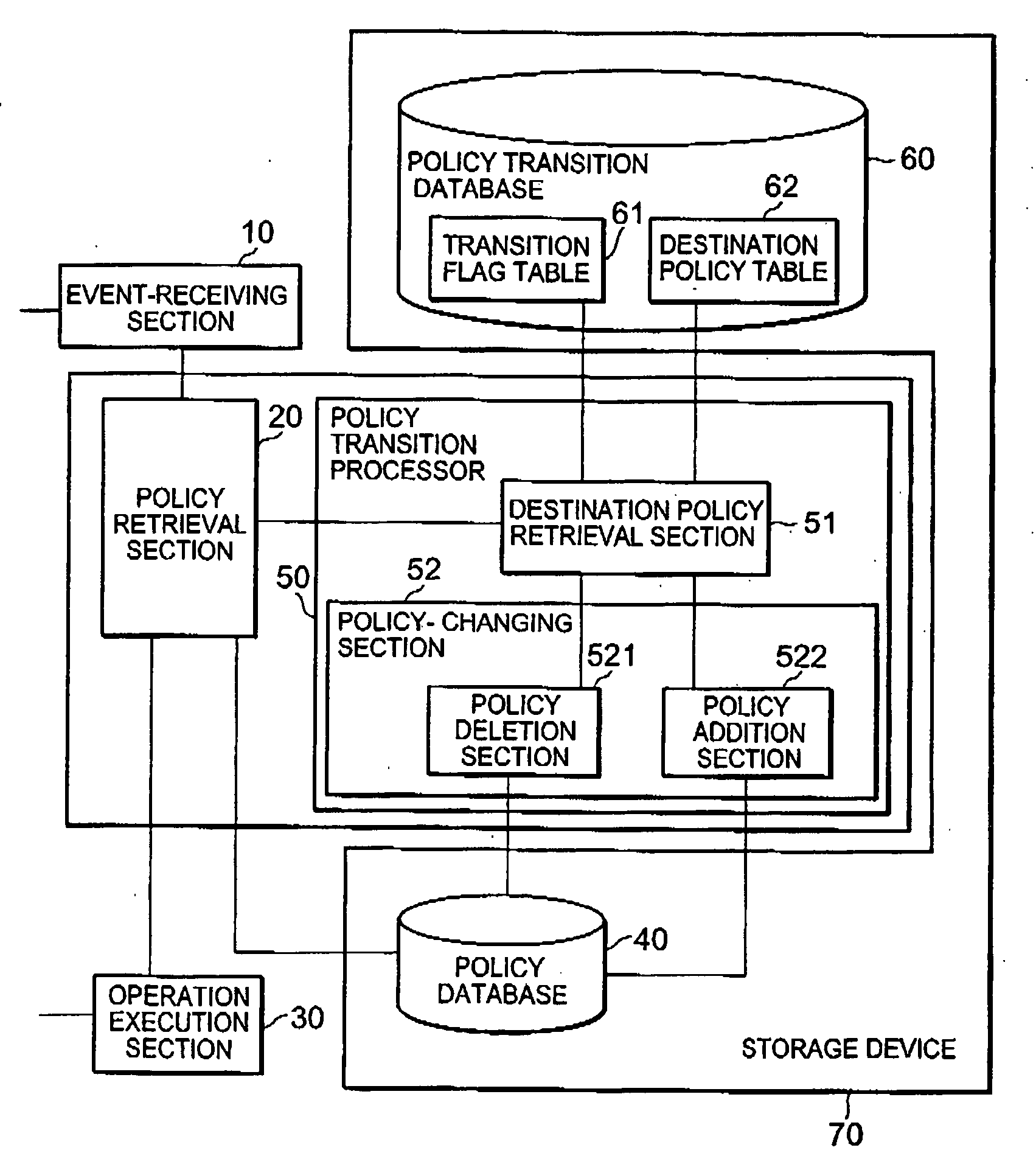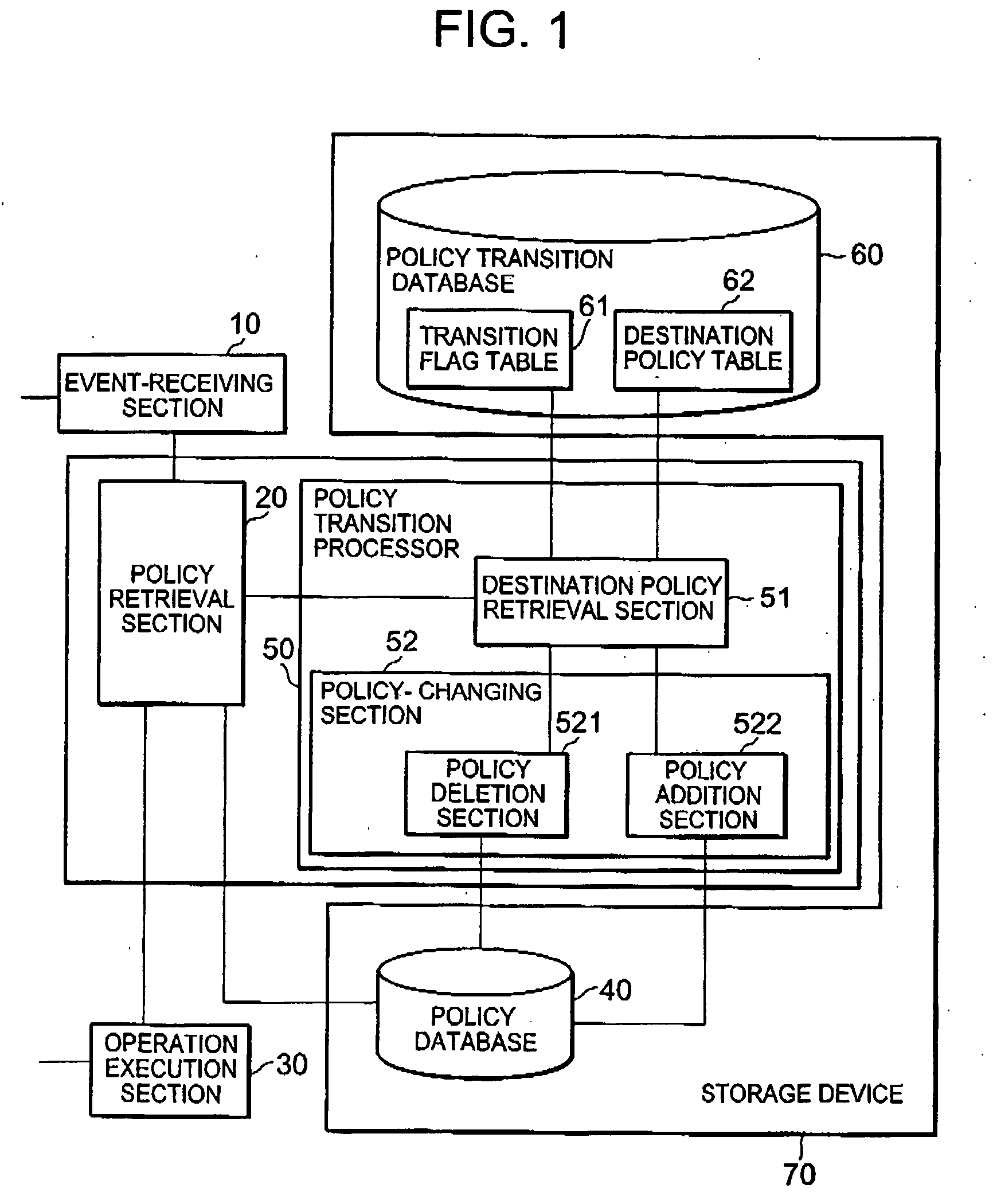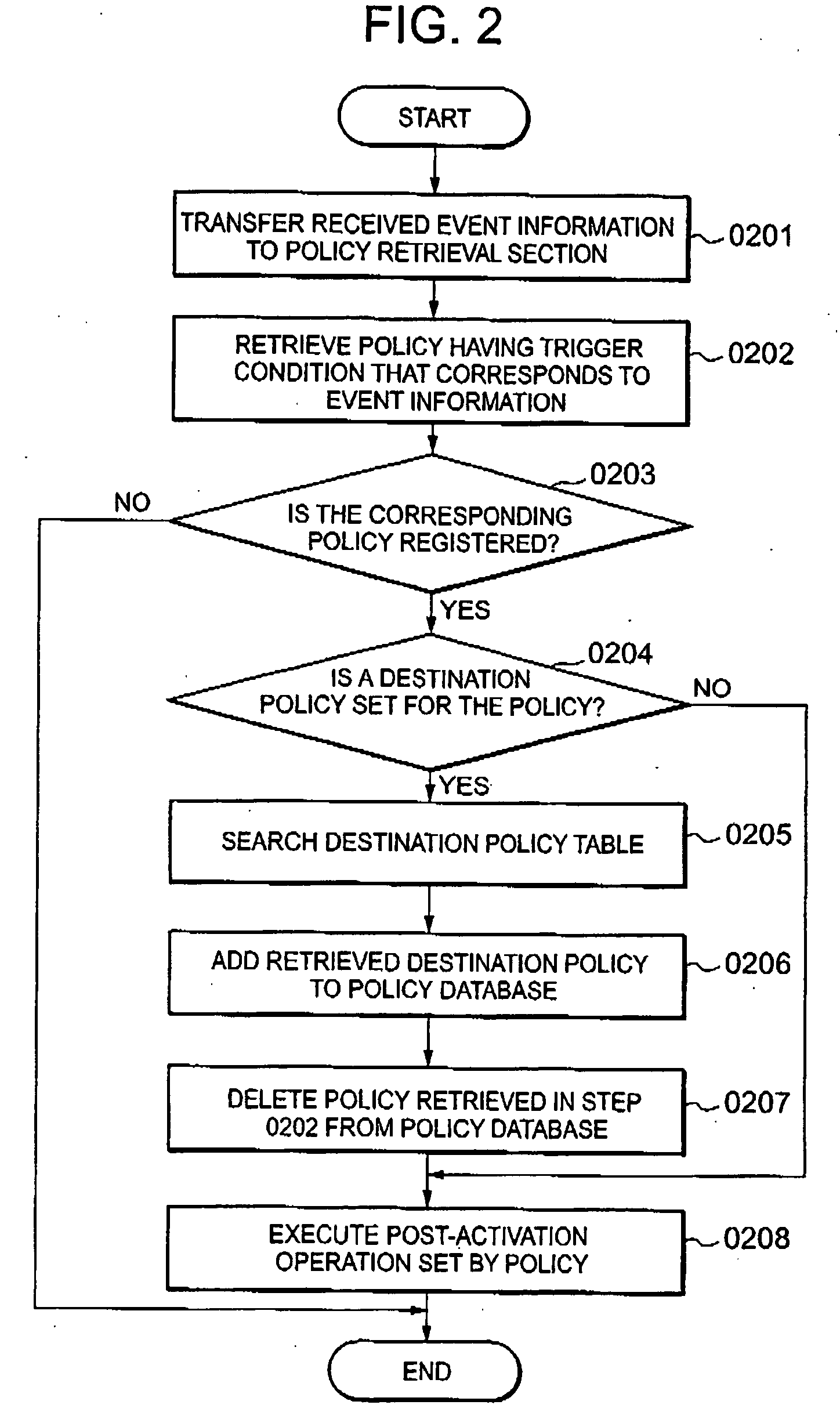Policy processing system and method
a policy processing and policy technology, applied in the field of rule-based policy processing technique, can solve the problems of increasing the time required for the policy retrieval process, unable to increase or reduce the number of policies, and conventional techniques cannot accommodate a chang
- Summary
- Abstract
- Description
- Claims
- Application Information
AI Technical Summary
Benefits of technology
Problems solved by technology
Method used
Image
Examples
example 2
[0204] A working example 2 corresponding to the second embodiment as shown in FIG. 3 will next be described with reference to the drawings.
[0205] The present working example has the same configuration as the above-mentioned Working Example 1, but the processor of the personal computer also functions as the destination policy generator 53 and has a policy generation rule table 64 instead of the destination policy table 62 in its hard disk.
[0206] An example of the format of the policy database 40 in the present working example is depicted in FIG. 25, and an example of the format of the policy generation rule table 64 is depicted in FIG. 26.
[0207] In the present example, the event “server=‘server B’, cpuload=0.95” indicating that “the load of server B is 0.95” has been sent to the event-receiving section 10.
[0208] The policy retrieval section 20 retrieves from the policy database a policy having a trigger condition that matches this event. A policy having the trigger condition “ser...
example 3
[0214] A working example 3 corresponding to the third embodiment as shown in FIG. 5 will next be described with reference to the drawings.
[0215] The present working example has the same configuration as the above-mentioned Working Example 1, but the processor of the personal computer also functions as the policy group retrieval section 54, and has a policy group table 63 in its hard disk. An example of the format of the policy group table 63 is depicted in FIG. 27.
[0216] In the present example, the event information “server=‘server B’, cpuload=0.95” indicating that “the load of server B is 0.95” has been sent to the event-receiving section 10.
[0217] The policy retrieval section 20 retrieves from the policy database 40 a policy having a trigger condition that matches this event. A policy having the trigger condition “server=*, cpuload 0.9” coincides with this condition in the present working example.
[0218] The policy retrieval section 20 then transfers the policy ID “3” held by t...
example 4
[0225] A working example 4 corresponding to the fourth embodiment as shown in FIG. 7 will next be described with reference to the drawings.
[0226] The present working example has the same configuration as the above-mentioned Working Example 2, but the processor of the personal computer also functions as the policy group retrieval section 54, and has a policy group table 63 in its hard disk. An example of the format of the policy group table 63 is depicted in FIG. 27.
[0227] In the present example, the event information “server=‘server B’, cpuload=0.95” indicating that “the load of server B is 0.95” has been sent to the event-receiving section 10.
[0228] The policy retrieval section 20 retrieves from the policy database 40 a policy having a trigger condition that matches this event. A policy having the trigger condition “server=*, cpuload 0.9” coincides with this condition in the present working example.
[0229] The policy retrieval section 20 then transfers the policy ID “3” held by ...
PUM
 Login to View More
Login to View More Abstract
Description
Claims
Application Information
 Login to View More
Login to View More - R&D
- Intellectual Property
- Life Sciences
- Materials
- Tech Scout
- Unparalleled Data Quality
- Higher Quality Content
- 60% Fewer Hallucinations
Browse by: Latest US Patents, China's latest patents, Technical Efficacy Thesaurus, Application Domain, Technology Topic, Popular Technical Reports.
© 2025 PatSnap. All rights reserved.Legal|Privacy policy|Modern Slavery Act Transparency Statement|Sitemap|About US| Contact US: help@patsnap.com



